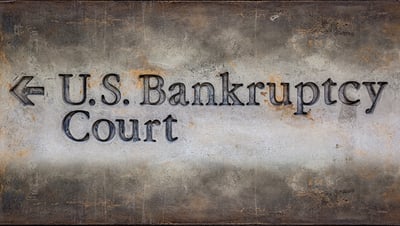 The prospect of having to file for bankruptcy can be daunting and intimidating, especially for someone who has never filed for bankruptcy, or maybe, has never even been in court before.
The prospect of having to file for bankruptcy can be daunting and intimidating, especially for someone who has never filed for bankruptcy, or maybe, has never even been in court before.
Most bankruptcy cases are very routine and are relatively simplistic in terms of the process. Often, the most challenging part of the process is preparing the initial petition and accompanying court paperwork to be filed with the court. For this reason, it is always advisable to consult with an experienced bankruptcy attorney before filing for bankruptcy.
What Happens After I File My Petition for Bankruptcy in Minnesota?
Many people wonder what happens after they file their petition and whether they will be required to go to court. In the vast majority of bankruptcy cases, the debtor (the person who files for bankruptcy) is not required to go to court.
Although bankruptcy cases are supervised by a judge assigned to the case, it is actually the bankruptcy trustee whom is primarily responsible for overseeing your case. The trustee is responsible for ensuring that the creditors are treated fairly and that your case proceeds in accordance with the bankruptcy code. Only in rare instances in which a disagreement ensues between trustee and the debtor (and sometimes with creditors) is it required that a hearing be scheduled for the judge to resolve.
What Is the 341 Meeting in Minnesota?
Instead of going to court, the debtor is only required to attend a creditor’s meeting (aka the “341 meeting”), in which the trustee asks questions of the debtor, under oath, to verify the accuracy of the information listed in the petition, to determine that the debtor has sufficiently met their obligations under the bankruptcy code, and to ensure that the creditors are being treated fairly. The “creditor’s meeting” is sort of a misnomer in that creditors are not required to attend the meeting and rarely ever do so.
Prior to the meeting, the debtor will be required to provide certain documents including bank statements, pay statements and recent tax returns. At the meeting, the trustee asks questions primarily relating to the debtor’s income, property, and expenses. The trustee will also inquire into relevant financial transactions, typically those of which occurred before the date that the petition was filed.
The Trustee
The trustee is primarily interested in determining whether the debtor improperly transferred property for less than its worth, preferentially paying certain creditors while not paying others, and any other financial transactions which may be considered unfair to creditors.
As long as the debtor remains honest and forthright throughout the bankruptcy process, evidence of these types of transactions rarely costs the debtor their right to receive a discharge of their debts (although some debts incurred with the actual or presumed intent not to be repaid may not be discharged). However, such transactions can create certain problems.
Some typically transaction give the bankruptcy trustee the right to “avoid,” or recover, payments or property that were improperly transferred or made before filing for bankruptcy. This can pose a particular problem when the person receiving the transfer of property or money is a family member of the debtor. These “preferential payments” and “fraudulent” transfers are further elaborated upon in other blogs. Fortunately, in most cases, there are few issues, and many issues are minor and easily resolved.
Disposing of Non-Exempt Property
Following a creditor’s meeting in a chapter 7 bankruptcy, the trustee and debtor also will resolve how to dispose of any non-exempt property (property not protected under law), if any, by either distributing the property to creditors or working out a deal in which the debtor agrees to repurchase the property from the trustee.
The debtor will then typically automatically receive their discharge from the court about 60 days after the creditor’s meeting. Following a creditor’s meeting in a chapter 13 bankruptcy, the trustee will determine whether the debtor’s proposed payment plan to repay a portion, or all, of their debts is feasible for the debtor, conforms with the bankruptcy code, and is in the “best interest” of the creditors.
Any issues with the plan are usually resolved without much difficulty between the trustee and the debtor and the plan is typically subsequently automatically approved and confirmed by the court about a month after the creditor’s meeting takes place.
CALL NOW FOR A FREE STRATEGY SESSION FROM A MN BANKRUPTCY LAWYER AT LIFEBACK LAW FIRM
This is a generalized overview of the bankruptcy process. In order to get a more detailed explanation of how the process works, particularly in your given situation, you should consult with an experienced bankruptcy attorney before filing for bankruptcy. See us anytime at www.LifeBackLaw.com!


